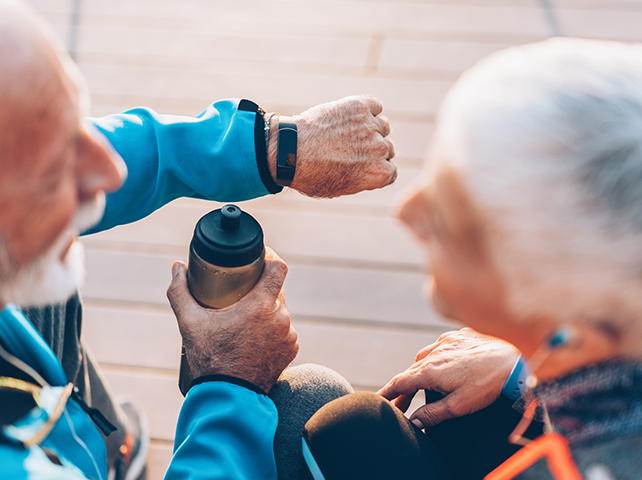- Senior Living
Senior Care and Senior Living Technology Trends That Actually Help

We’re all intimately aware of how much technology has changed our everyday world and continues to do so at an increasing pace. And while seniors can sometimes be slower to adopt new technologies, in many ways, they may have the most potential to be helped by technological innovations.
Some products have already started to make their mark, while others on the horizon could make a big difference in years to come. It’s hard to predict which technologies will be the most significant for seniors, but we have a few ideas about which senior living technology trends could play a role in how people age in the near future.
Here are some technologies for seniors that are already making a difference in people’s lives and what the future of each may hold.
Wearables
Wearables already provide seniors with easy reminders, activity tracking, and some added safety. In fact, wearables made for seniors are already a notable portion of the market. Lively Wearable Plus and UnaliWear’s Kanega Watch are examples. And two of the most talked-about features of the newer Apple Watches are ECG and fall detection, both of which are aimed at older consumers.
Companies are clearly interested in pursuing the senior market with new products. Future wearables will become ever more sophisticated at tracking health concerns, with features that monitor the wearer’s blood pressure and vital signs or help seniors with vision loss navigate their way through the world.
Some “smart” wearables that are just around the corner were shown recently at CES 2020, the major consumer technology trade show. eSkin Sleep and Lounge’s “smart pajamas” are loose and comfortable, but capable of detecting falls, monitoring overall activity, and tracking sleep patterns. Among the many features of the Withings ScanWatch is 24/7 heart rate monitoring. If the watch detects an irregularity, it can tell the wearer to record an EKG. And the Welt Smart Belt Pro is a stylish belt intended to lower the risk of falling. Embedded sensors and algorithms will accurately calculate the fall risk from abnormal gait patterns. If the Smart Belt Pro detects a heightened fall risk, it sends a warning to the user’s phone.
Voice-Activated Smart Homes
For many consumers, voice-activated smart devices offer convenience and a bit of cool factor. For seniors with mobility issues, they can increase the safety of aging in place.
For seniors who have difficulty walking or are worried about the risks of a fall, the ability to talk to a device like Amazon Echo to tell it to turn lights on and off, thermostats up and down, and the sprinklers on and off, can make a big difference.
As voice-activated smart devices continue to take off, more of our around-the-house tasks will begin to be controlled this way – anything from turning the oven on to closing the blinds will all be possible while sitting in one place. (Of course, we still advocate maintaining as active a lifestyle as possible.))
Self-Driving Cars
The advent of self-driving cars is one of the most exciting technological developments that has the potential to improve seniors’ lives. Influential companies like Google and Tesla have made big investments into launching the technology for driverless cars. Today seniors haveto pursue other options for getting around when they’re no longer able to drive, but within a few years, it’s quite possible they won’t have to dread the inevitable conversation about when it’s time to hand over the keys.
Robot Health Care
Imagine a world in which autonomous mobile robots provide assistive technology for our senior citizen population. Some memory care facilities are already using robot pets as a tool to help residents with dementia relax when they’re dealing with bouts of anxiety.
Senior care technology researchers are now working on robot caregivers, also known as elder care robots, that can provide even more of the care most seniors can expect to need as they age. These robots will come equipped with state-of-the-art navigation, sensory and perception systems. These will allow the robots to complete tasks as simple as picking up a remote control or retrieving a pill box, or s as complicated as taking a person’s temperature or vital signs using sophisticated facial recognition technology.
In the future, elder care robots will have the ability to take on medical diagnostics, as well as use facial recognition algorithms to determine how someone is feeling. These robot caregivers probably won’t replace human caregivers entirely, but they can lighten the heavy load caregivers face now. It’s not a question of if, but when.
We can only guess at what the future will look like, but all signs point toward new technologies for seniors making life easier, safer and better.
Life Care Services® owns and operates senior living communities all around the country. To find a community near you, use our location tool.
